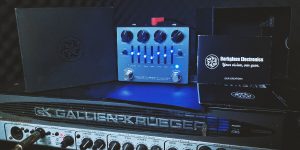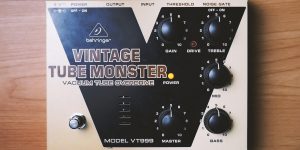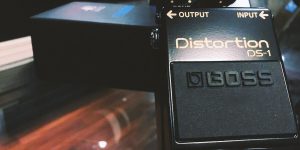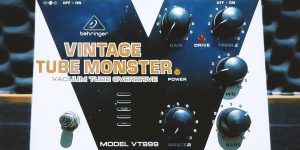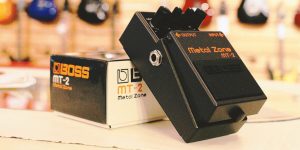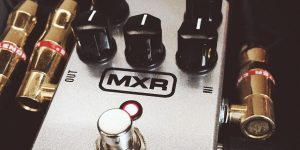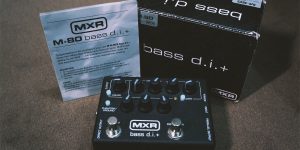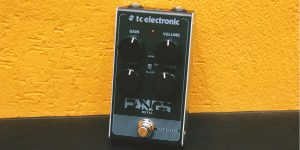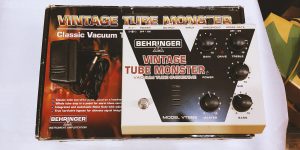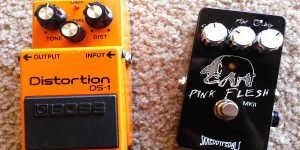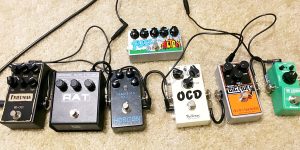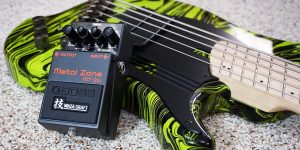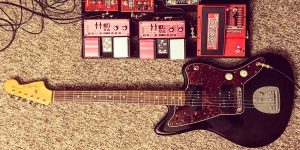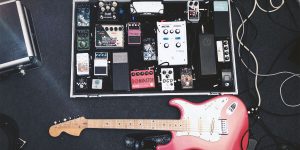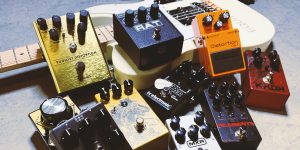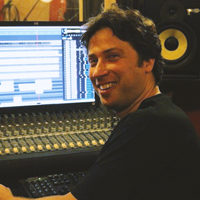Guitar pedals, often seen as little magic boxes, possess the power to wholly transform your sound. Have you ever wondered how these compact devices work? At their core, they alter the electric signal your guitar produces, allowing musicians to craft a vast array of tones and effects. To truly tap into the full potential of your instrument and pedals, understanding what do guitar pedals do and how to use guitar pedals is important. So, let’s embark on this journey together as we delve deeper into the fascinating world of pedal usage.
Understanding the signal chain
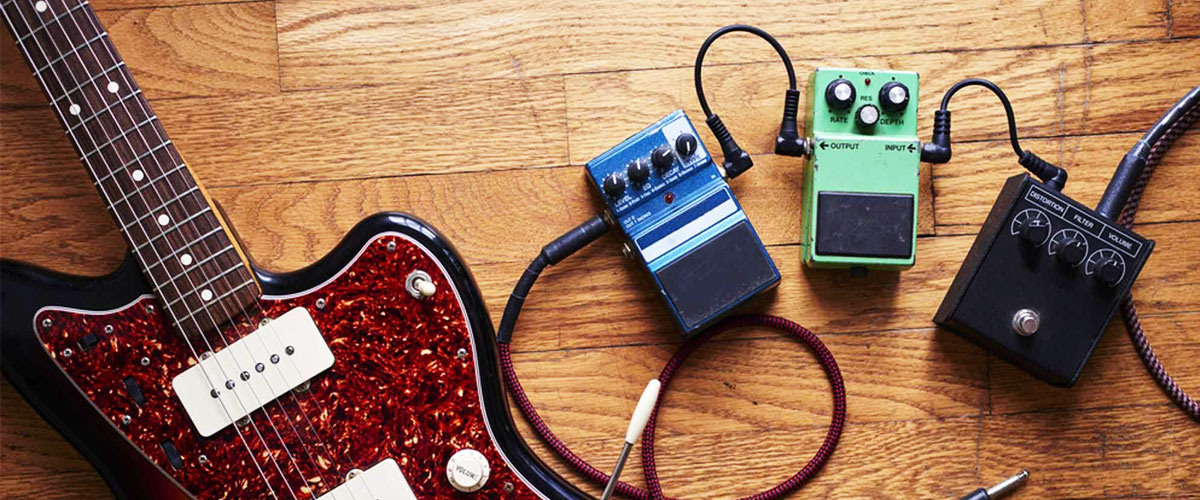
The way you arrange your guitar pedals, known as the “signal chain,” can be the difference between achieving a sonic masterpiece and a muddled mess. The interplay between pedals can either amplify your tone’s richness or dampen its clarity. Given this, musicians often have specific sequences tailored to their genre’s unique demands.
Below are common signal chains for a few genres, designed to capture each one’s essence:
-
1. Metal:
Tuner > Dynamic (e.g., compressors) > Pitch-shifting > Distortion/Overdrive (typically high-gain) > Modulation (like chorus) > Time-based (selective delay and reverb) > Noise gate > Looper -
2. Rock:
Tuner > Dynamic > Overdrive (classic rock crunch) > Pitch-shifting > Modulation (like phaser or flanger) > Time-based (delay and reverb) > Looper -
3. Blues:
Tuner > Dynamic > Overdrive (soft, for a rich crunch) > Modulation (gentle chorus) > Time-based (spring reverb, tape delay) > Looper
These are foundational signal chains that many musicians use as a starting point. Individual tweaks and customizations can always be made based on the desired guitar sound effect and personal preference. Remember, exploration and experimentation reign supreme in the realm of guitar pedals.
Setting up your pedals
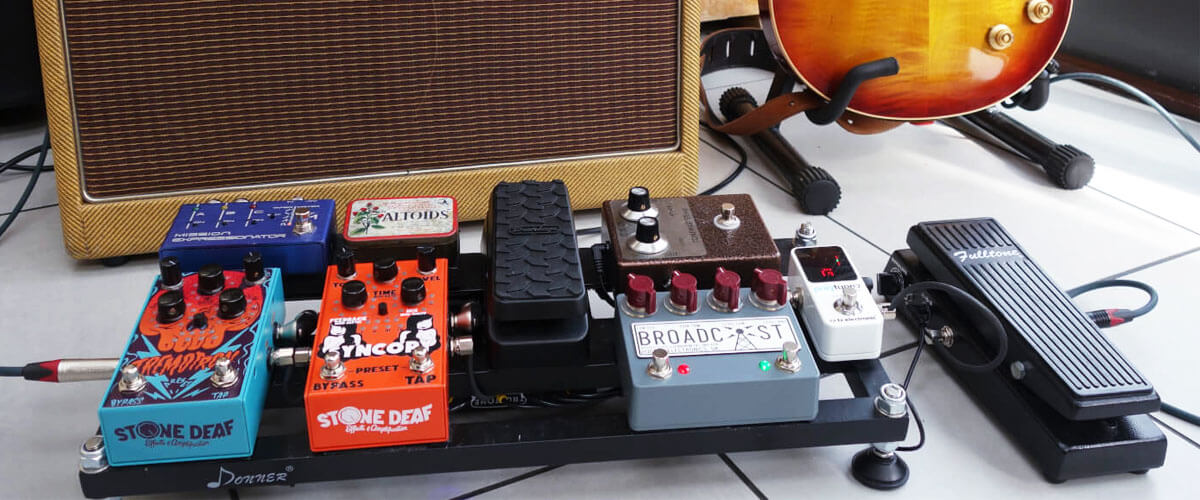
Having grasped the importance of the signal chain’s order, the next step is physically arranging and connecting your pedals to craft that desired sonic palette. Whether you’re a newbie or a seasoned guitarist, here’s a quick guide to set things up:
- Pedal placement. Depending on your preference and stage needs:
- On the floor: Ideal for those with a limited number of pedals or those who enjoy a more minimalistic approach.
- On a pedalboard: A more organized way, especially if you have multiple pedals. It keeps them secure and makes setups and teardowns quicker.
- Connection:
- Patch cables: Use short patch cables to connect the output jack of one pedal to the input jack of the next. Quality cables ensure a cleaner signal path and fewer technical glitches.
- Powering up:
- Battery power: Some pedals operate on a 9V battery. It is handy for portability but not the most reliable for longer playtimes.
- External power source: A more consistent option. You can power individual pedals with separate adapters.
- Power supply units (PSU): Designed to power multiple pedals simultaneously. These units ensure that each pedal gets the right voltage and current.
Configuring your pedal settings
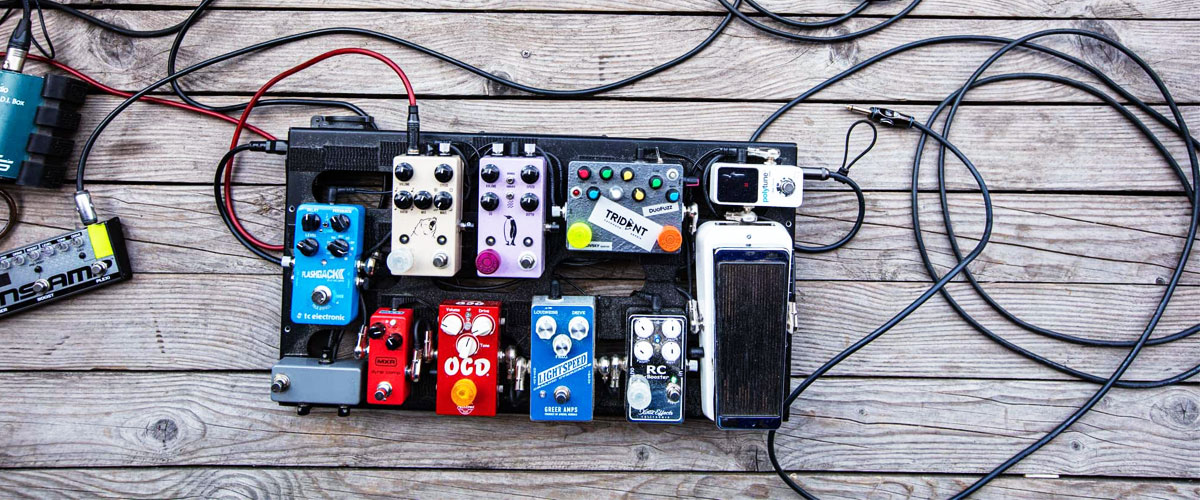
Setting up your pedals and signal chain is only half the battle; getting to know each pedal’s settings is essential to unlocking its full potential.
- Connecting the chain:
- Guitar to pedal: Utilize a standard instrument cable to connect your guitar to the input of the first pedal in your chain.
- Pedal to amplifier: The output of the last pedal in your sequence should then be connected to your amplifier’s input using another instrument cable.
- Pedal configuration. Each pedal comes equipped with its distinct set of controls, often manifesting as knobs, switches, or buttons. These controls directly influence the final sound produced.
Here’s a typical set of primary controls you’ll encounter:
- Gain: Dictates the amount of distortion or saturation. Higher settings will result in a more distorted sound.
- Tone: Controls the brightness or darkness of your sound. Adjusting this can bring out higher frequencies or mellow down the sound.
- Level: Regulates the output volume of the pedal. Be cautious; a high level can cause unwanted clipping or feedback.
Tips for optimal performance
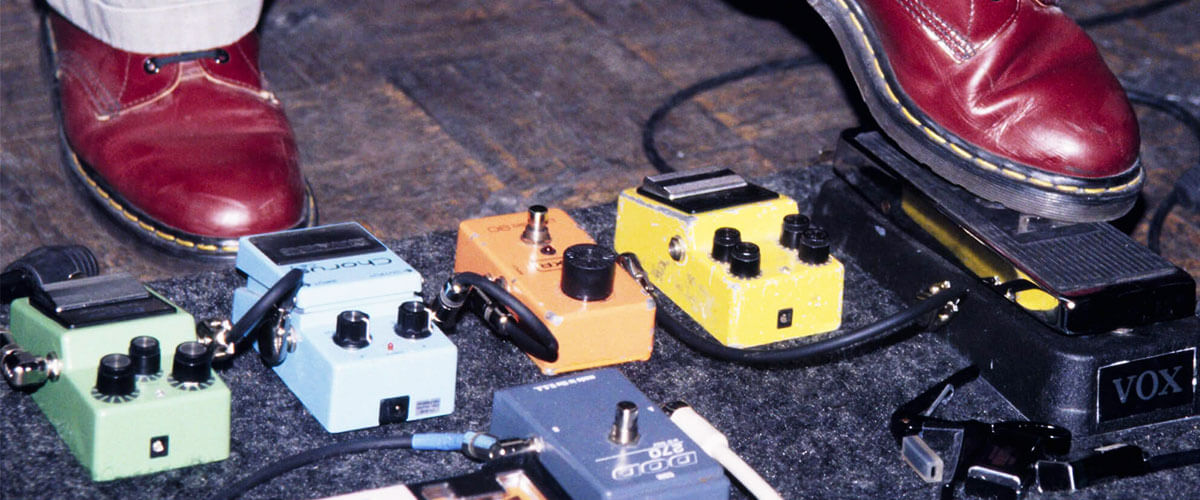
Achieving the perfect sound is a combination of skill, equipment, and meticulous setup. Here’s how you can ensure a pristine signal and harness the full power of your pedal chain:
Cable length is more important than most realize. Longer cables might seem convenient, but they increase the chance of signal loss and interference. It’s always best to minimize the length wherever possible.
Pedal maintenance is like guitar care—it needs regular attention. Cleaning jacks and switches periodically and replacing worn-out parts or batteries ensures that your pedals function at their peak.
The debate between true bypass and buffered is perennial. In essence, true bypass pedals won’t affect your signal when off, preserving your guitar’s natural tone. On the other hand, buffered pedals help maintain the signal strength over extended cable runs. The choice boils down to individual needs.
Volume levels, especially on gain-based effects like overdrive or boost, require keen attention. Overdoing it can lead to clipping or distortion, muddying your output. Balance is key.
High-gain settings or improperly grounded gear can be sources of unwanted noise or feedback. In such cases, noise gates or suppressors can be a lifesaver, ensuring that your tone remains clean even in demanding situations.
Don’t shy away from pairing similar pedals. Using two alike effects, such as dual overdrives, can result in a richer, more intricate sound. It’s akin to layering in music production—the whole becomes more than the sum of its parts.
Lastly, the power of expression pedals shouldn’t be underestimated. Some effects allow for an external expression pedal, granting you real-time control with your foot. This dynamic adjustment can elevate live performances, adding depth and variation on the fly.
In conclusion, the world of guitar pedals is vast, offering a myriad of tonal possibilities. For those wondering, “How do guitar pedals work?” it’s about understanding the intricacies of pedal order, setup, and settings. Whether you’re a beginner or a seasoned pro, grasping these elements can make all the difference. Dive deep, experiment, and let your sonic journey be as exciting as the destination itself.


